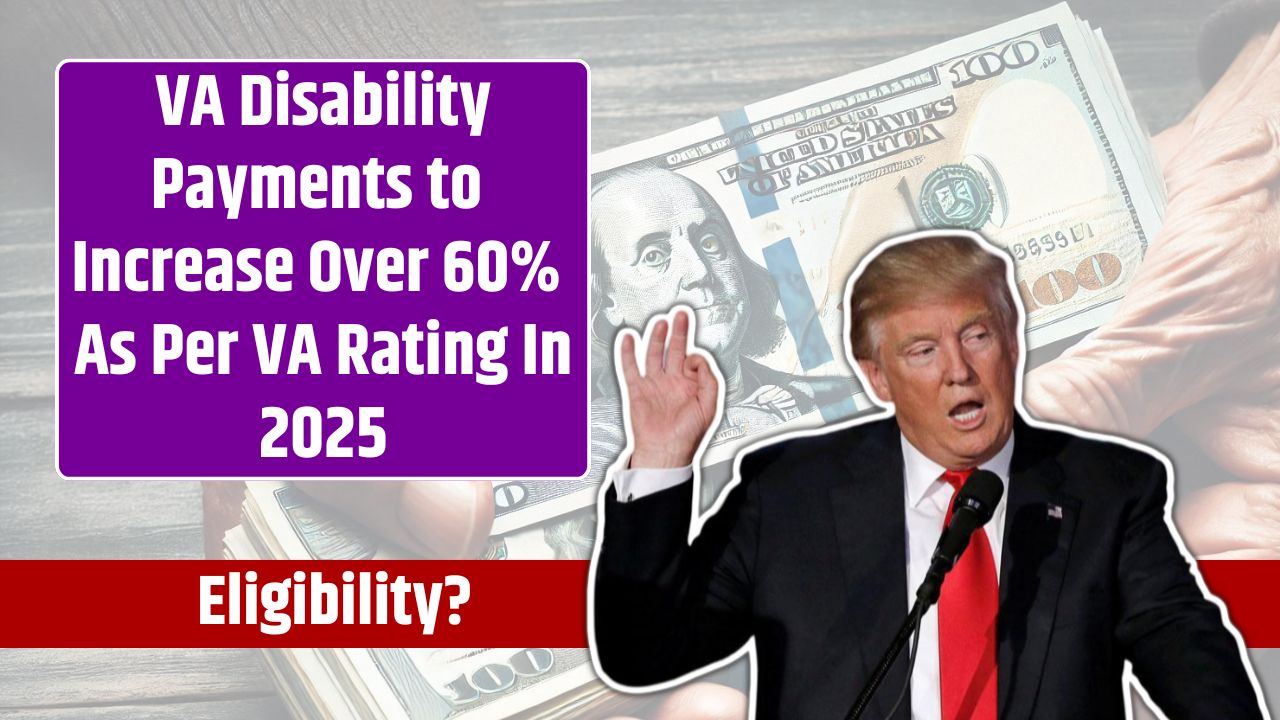In an unprecedented move, VA disability payments are set to rise by over 60% starting January 2025.
This change aims to help veterans and their families manage increasing living expenses amid rising inflation.
If you’re wondering how this adjustment impacts you, let’s explore eligibility criteria, the updated payment schedule, and actionable steps to make the most of this increase.
Reasons
The Department of Veterans Affairs (VA) adjusts disability payments annually to align with the Cost of Living Adjustment (COLA).
The massive 60% increase for 2025 reflects persistent inflation and economic challenges.
For context, veterans with a 100% disability rating currently receive $3,621.95 monthly. With the upcoming adjustment, this amount will rise to approximately $5,795.12.
This boost helps veterans meet higher costs for housing, medical care, and everyday essentials.
Eligibility
Not everyone qualifies for VA disability payments. Understanding the eligibility requirements is essential to determine if you can benefit from this increase.
Key Criteria
- Service-Connected Disability
Your condition must be linked to your military service. Common examples include PTSD, hearing loss, or physical injuries. - Verified VA Rating
The VA assigns a disability rating between 10% and 100%, reflecting the severity of your condition. This percentage determines your monthly payment.- 10% Rating: Currently yields $165.92 per month.
- 100% Rating: Currently pays $3,621.95 per month, rising to $5,795.12 in 2025.
- Discharge Status
You must have been discharged under conditions other than dishonorable. Some benefits vary by discharge type.
For detailed eligibility or to appeal a decision, visit the VA Disability Compensation Page.
2025 Payment Schedule
Knowing the payment dates can help you plan your budget more effectively. Here’s how the 2025 payment schedule works:
| Benefit Month | Payment Date |
|---|---|
| December 2024 | December 31, 2024 |
| January 2025 | February 1, 2025 |
| February 2025 | February 28, 2025 |
If the first business day of the month falls on a weekend or holiday, payments will be disbursed on the previous business day.
Preparation
To ensure you receive the full benefits of the increase, take these steps:
1. Verify Your Disability Rating
Your rating must accurately reflect your current condition. If you believe it’s too low, file for a reevaluation:
- Submit updated medical records.
- Complete VA Form 21-526EZ.
- File online at VA.gov or visit your local VA office.
2. Update Direct Deposit Information
Outdated bank details can delay payments. Log in to your VA account to verify and update your financial information.
3. Reassess Your Budget
With the additional income, take the opportunity to reevaluate your financial goals. Consider allocating funds for savings, healthcare, or other essential expenses.
4. Explore Additional Benefits
Beyond disability payments, veterans may qualify for supplementary programs like:
- Special Monthly Compensation (SMC): For severe disabilities or special needs, such as requiring aid and attendance.
- VA Health Care Benefits: Access free or low-cost healthcare for service-related conditions.
- Housing Assistance: Programs like Specially Adapted Housing (SAH) offer grants for home modifications.
Check the VA Benefits Portal for details.
5. Seek Guidance from a VSO
Veterans Service Officers (VSOs) provide free assistance to help navigate claims, appeal decisions, and maximize entitlements. Organizations like the American Legion and Veterans of Foreign Wars (VFW) are excellent resources.
The 60% increase in VA disability payments is a milestone in supporting veterans and their families. By understanding the updated eligibility, payment schedules, and supplementary programs, you can take full advantage of this opportunity.
Ensure you review your rating, update your information, and consult a VSO to secure the benefits you deserve.
















